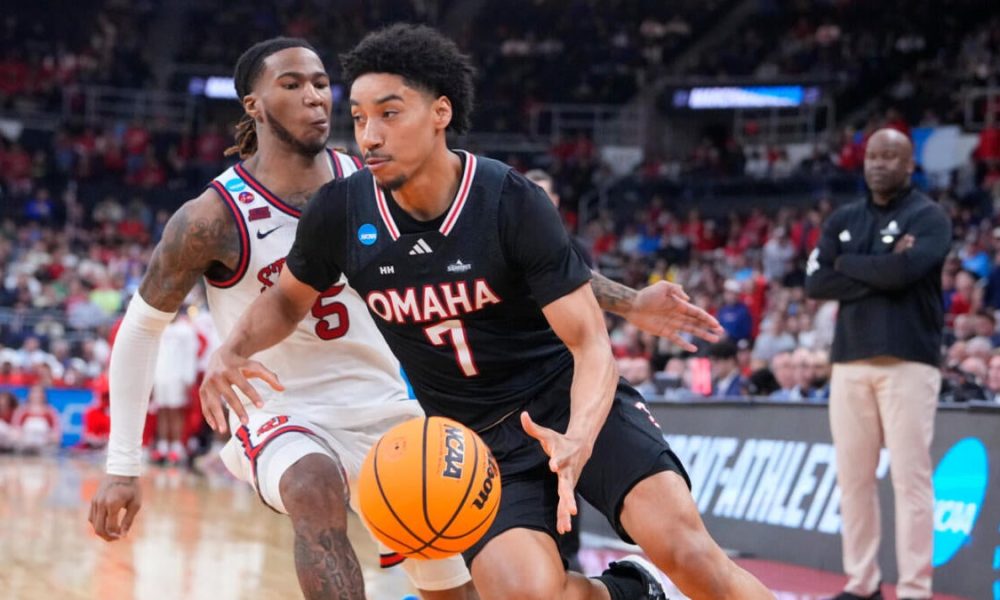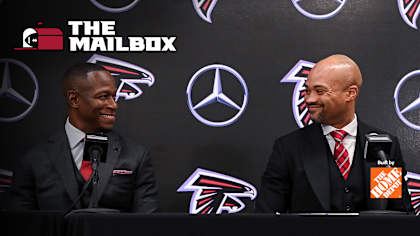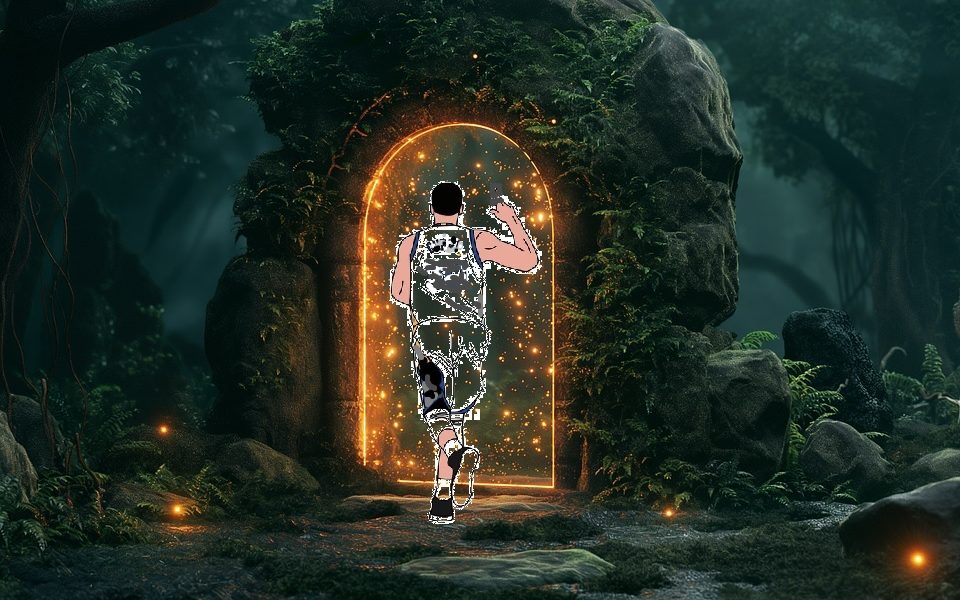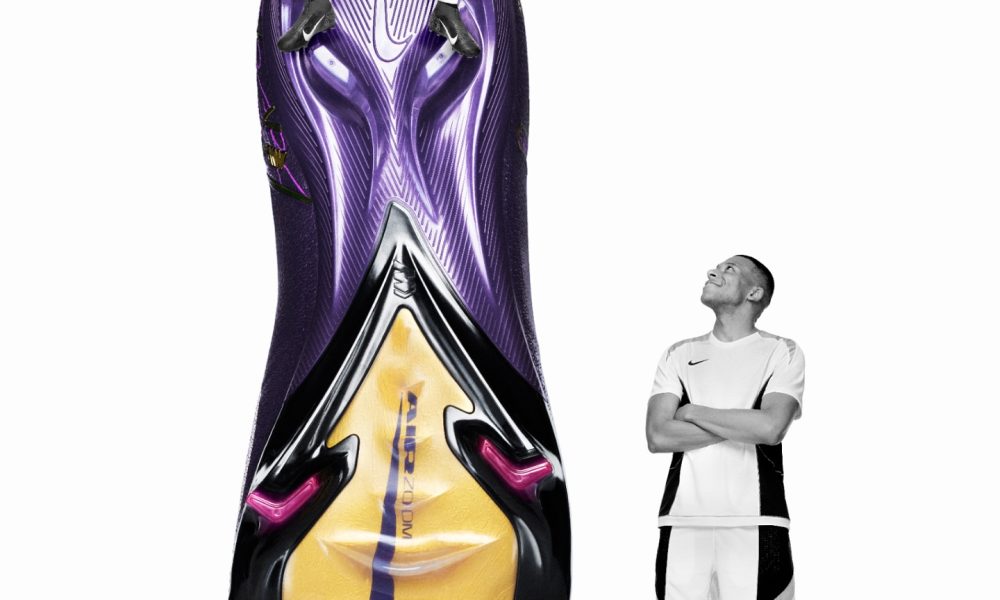NIL
College Football NIL Floodgates Open After $2.8B Deal
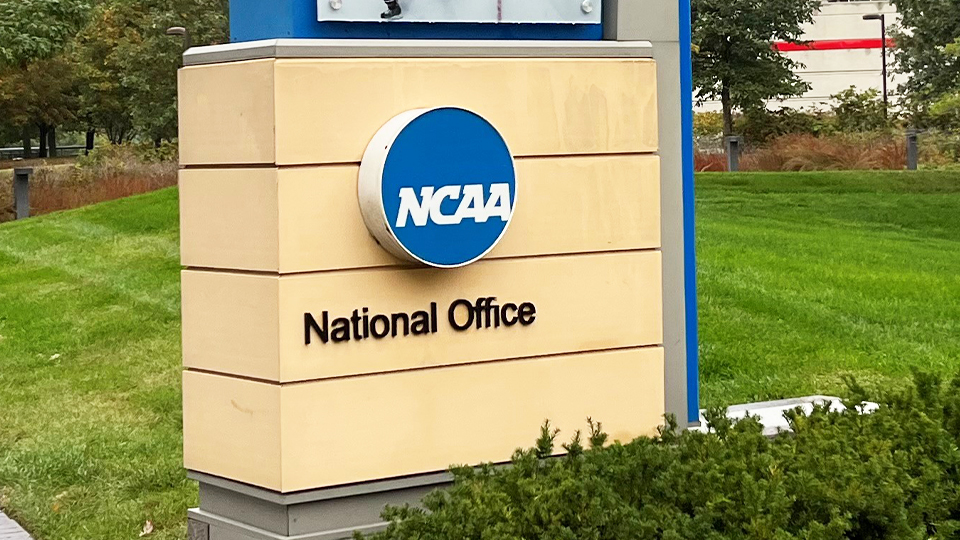


Here’s the deal. College football just hit a massive turning point. A federal judge approved a $2.8 billion settlement in the House v. NCAA antitrust case. What does that mean? It means Division I athletes—specifically from football and basketball—are now getting paid for past and future contributions. That’s not small change. It’s a historic shift that resets the college football economy. And it directly affects how teams are built, how players move, and how odds shift across the best NCAAF sportsbooks.
Let’s be clear. This isn’t just some vague NIL reform. Starting July 1, 2025, schools can start cutting checks directly to athletes. Not through collectives. Not through boosters. Actual, on-paper, university-authorized compensation. Up to $20.5 million annually, per school. That number will grow year after year. And yeah—this is going to hit betting markets hard.
Schools Can Now Pay Players. Here’s How It Works
Retroactive payments up to $2.8 billion are being handed out to thousands of athletes who played from 2016 to 2024. That’s step one. Step two: schools that “opt in” can start legally compensating athletes from their own athletic budgets in 2025. The cap starts at 22% of total athletic revenue. For most Power 5 programs, that’s in the tens of millions. And it’s set to increase gradually over a 10-year framework.
This changes everything. Players who were once technically amateurs are now paid employees in practice—though not by legal definition. Schools still aren’t calling them employees, but functionally? They are. This means more leverage for athletes, more structure for contracts, and more clarity for everyone watching the sport—including oddsmakers.
Football Dominates the Payout Split
Football takes the greatest share. Approximately 75% of all future payments will be allocated to football athletes. Men’s basketball receives about 15%. The remaining portion is divided between women’s basketball and Olympic sports. This is a strategic business decision; these sports generate the most revenue.
That’s changing recruitment. If you’re a five-star quarterback or wide receiver, you’re no longer choosing a school based on playing time. It’s about the money now. NIL deals are widespread enough that they are comparable to braiding opportunities for players, agents, and parents. Programs with the biggest spend are most likely to win the most battles, and that will most certainly influence depth charts, win totals, and postseason outlook.
Compliance Now Matters More Than Ever
A way to keep things balanced has been established. Any third-party NIL contracts exceeding $600 will be screened by a national clearinghouse managed by Deloitte. Schools are obligated to report all NIL activity quarterly, similar to how the NFL and NBA manage salary cap rules, though these leagues operate in a murky space without well-defined punishments.
This is certain: any school violating compliance regulations risks losing the ability to compensate players. For bettors, this means compliance updates are as critical as following injury reports. A midseason NIL freeze could be detrimental for a school’s roster depth and overall performance.
Pushback Already Underway
It is a work in progress. There are ongoing appeals for other reasons, too. The payment structure is the biggest problem, and it violates Title IX. Currently, male athletes are the only ones able to profit from the payout structure. Some female athletes have already submitted appeals claiming the deal violates the law by not compensating them properly based on gender. If courts uphold these appeals, there will most likely be a payment halt until the terms of payment distribution are assessed.
That could mess with timelines. The timeline for the athlete payments is projected to begin in mid-2025. However, if there are legal obstacles to face, it might be 2026 or later before everything is fully functioning. Schools may choose to wait until a decision is made rather than implement the system right away.
Collectives Still In Play—For Now
Shool can now directly pay athletes, but organized booster fund collectives are still set to stick around until July 2025. That involves controlled chaos, so there is still a period for that. Rival collectives fighting over deals for the same player, or being put against each other in a bidding war, will result in athletes being able to switch teams with very minimal restrictions.
Everything will change come 2025. Schools will not be permitted to use collectives as ways to circumvent revenue caps, and if they attempt to do so and get caught, there will be consequences. Enforcement will be essential; there needs to be stipulations. Sports bettors are monitoring the situation closely, and it will be interesting to see if schools keep their promises.
Boost in Transparency = Sharper Betting Angles
This changes how fans and bettors evaluate teams. If a school announces it’s spending $18 million on NIL deals, that tells you something. It means they’re investing in depth, retention, and top-tier talent. That’s not just noise—it’s useful info.
This is where live betting on NCAAF games gets interesting. Say a top program has a Heisman-caliber QB who’s locked into a $1 million NIL deal. If he goes down mid-game, the odds are going to move faster and more dramatically than in past seasons. Why? Because sportsbooks know the talent gap behind him might be wider than before.
Power Programs Are Spending Big
Some schools have already made moves. Texas Tech spent over $5 million just to sign a single offensive lineman. LSU is putting sponsor logos on its jerseys. Texas A&M has restructured its entire athletics department to facilitate ongoing long-term NIL payments.
The bigger programs are treating NIL spending as a recruiting arms race. They’re not trying to defend their position; they’re trying to crush all competition. That means mid-majors and lower revenue programs could be shut out of serious playoff contention unless they uncover smart angles or undervalued players.
From a betting perspective, there is a wider talent gap. Elite teams will likely become more dominant and consistent. Blowouts might occur more frequently. It may become less volatile to place bets on the future. Underdogs will still win at some point, but the talent gaps are widening, and that will be reflected in betting lines.
Smaller Programs: Squeeze Coming
Non-Power 5 schools may find it difficult to keep up. The total revenue from these institutions falls short of supporting the same level of NIL payments. This is not simply a recruiting challenge; it’s also about keeping athletes enrolled at the institution. If a three-star running back performs well for a mid-major team, nothing is preventing him from transferring to an SEC team where bigger NIL deals await.
For sportsbooks and bettors, this creates volatility within the Group of Five conferences. Talent is too precious to be stagnant. In addition to upsets occurring more frequently in September, there’s a strong likelihood they will diminish by November as depth is tested. The advantage still comes down to staying informed. Following week-by-week movements of recruiting, transfer portal activity, and NIL funds remains crucial.
Practical Betting Adjustments to Make
Here’s what smart bettors should be doing right now:
- Observe schools that commit to large NIL Budgets. Their recruiting class and roster depth will reflect that.
- Pay attention to transfer news. NIL-motivated departures or additions shift win totals, spreads, and futures.
- Lurking lawsuits or rulings related to Title IX also matter. Payment delays could dampen team morale or team retention causing early departures.
- Predict prop bet value using NIL contract news. Non-performance by a highly paid player hints about team dynamics or cohesion.
- Avoid schools with vague or poorly defined NIL frameworks. Unpredictable departures by players or a decline in performance are likely to occur midseason.
Frequently Asked Questions
Q: Who qualifies for back payments under the $2.8B settlement?
A: Any Division I athlete in football, men’s basketball, or women’s basketball who competed between 2016 and 2024.
Q: How much can each school pay athletes directly starting in 2025?
A: Up to $20.5 million per year, capped at 22% of athletic revenue, with increases built into the long-term plan.
Q: What’s the purpose of the NIL clearinghouse?
A: It reviews third-party deals over $600 to confirm market value and flag shady activity or cap violations.
Q: Will athletes in all sports get paid?
A: Mostly football and men’s basketball. Other sports receive a smaller share unless legal rulings force changes.
Q: How to Build a Profitable Betting Strategy for NCAAF Games?
A: For college football betting strategies, you must bet on schools with strong NIL budgets. Follow recruiting moves, transfer portal news, and NIL disclosure reports. Use live betting to capitalize on roster shifts and player exits.
The Money’s Talking Now
This is no longer theoretical. Athletes finally earn pay. Schools are planning entire budgets around NIL strategy. And sportsbooks are adjusting as fast as possible. What used to be a guessing game about who might stay or leave is now clearer—and bettors who follow the money are going to have the edge.
College football just flipped into a new era. The ones who adapt—on the field and in the sportsbooks—are going to win.
NIL
Georgia’s NIL Lawsuit Against Ex-LB Sign of Times in Modern NCAA Sports

The University of Georgia Athletic Association (UGAA)’s NIL lawsuit against former linebacker Damon Wilson II, who transferred to Missouri earlier this year, could become a standard type of litigation as more and more athletes sign NIL deals with one school and then transfer to another.
The specific legal dispute is straightforward: UGAA claims that Wilson, 20, breached his NIL contract with Classic City Collective (CCC)—a Georgia-aligned former NIL collective—and failed to pay a liquidated damages provision that was triggered upon breach.
Advertisement
More from Sportico.com
A four-star recruit from Venice High School (Fla.), Wilson played for the Bulldogs in the 2023 and 2024 seasons and, while on the Tigers in 2025, earned second-team All-SEC recognition as he amassed nine sacks—tied for third-best in the SEC.
According to litigation records at Athens-Clarke County (Ga.) Superior Court, Wilson signed a 13-month, $500,000 NIL deal with CCC on Dec. 21, 2024. The deal runs from Dec. 1, 2024, to Jan. 31, 2026 and was contingent on Wilson being enrolled as a student at Georgia and part of the football team. He was paid $30,000, his first monthly licensing fee payment, on Dec. 25, 2024. UGAA emphasizes that Wilson accepted this payment, meaning the contract went into effect. On Jan. 6, 2025, Wilson announced he was entering the transfer portal, a move that Georgia says constituted a breach of the NIL deal. About a week later Wilson withdrew from Georgia and began the process of transferring to Missouri. It’s unknown how much money Wilson received to transfer to Missouri.
Georgia moved to close CCC over the summer, when U.S. District Judge Claudia Wilken granted final approval of the House settlement, and has partnered with Learfield on NIL matters. Relevant to the school’s dispute with Wilson, CCC assigned its Wilson contract to UGAA, meaning the athletic association has the legal right to enforce the contract.
Advertisement
UGAA argues that under the NIL deal’s liquidated damages clause, Wilson, as the licensor, must pay all remaining license fees that would have been payable. The remaining value, according to court filings, is $390,000.
In May, attorney Spence Johnson wrote a demand letter to Wilson on behalf of CCC. The letter told Wilson that while CCC “does not want to unnecessarily undermine your financial future,” CCC also “insists that its student athletes be accountable for promises they make.” Wilson was told he had 14 days to pay or else CCC would “pursue legal action against you based on your breaches” of the NIL deal.
In August, Johnson wrote another letter to Wilson. Johnson said that UGAA had been assigned Wilson’s NIL deal with CCC. The letter indicated Wilson didn’t pay as demanded and that the NIL deal calls for arbitration to resolve disputes. In October, UGAA, through Johnson, filed a lawsuit to compel arbitration, with the complaint stating that Wilson hasn’t responded to demand for arbitration. There is no attorney listed for Wilson and it does not appear from the court docket he has responded to the litigation.
The actual legal controversy—alleged breach of contract—is ordinary, but the circumstances are extraordinary. A university, through its athletic association, is suing a former student athlete who transferred for reneging on his NIL deal.
Advertisement
A lawsuit like UGAA v. Wilson would have been inconceivable five years ago, but in the new college sports world, it’s the kind of case that could become more common.
Through antitrust litigation and accompanying settlements, college athletes can now transfer without sitting out of sports for a period of time. That approach is consistent with college students in general as they can transfer schools, but typical college students aren’t signing NIL deals.
There’s plenty of money to be made, too, for power conference football players to switch schools. University-aligned NIL collectives can pay athletes, some of whom also stand to benefit from the injunctive relief portion of the House settlement. Participating colleges can directly pay athletes a share of up to 22% of the average power conference athletic media, ticket and sponsorship revenue, with $20.5 million pegged as the initial annual cap. There are thus three buckets of money for some college athletes: revenue share, NIL deals and athletic scholarships.
And playing in college could become something of a career depending on the ultimate trajectory of antitrust litigation brought by Vanderbilt quarterback and former JUCO transfer Diego Pavia—the runner-up for the 2025 Heisman Trophy—and other seasoned college athletes. They wish to continue playing college football past the NCAA eligibility clock, which limits eligibility to four seasons of intercollegiate competition, including JUCO and D-II play, within a five-year period.
Advertisement
College sports, at least football at power conference schools, resembles professional sports—except without free agency restrictions and similar player restraints found in the NFL. Those restraints are lawful because the NFL collectively bargains them with the NFL players association. They are thus protected by the non-statutory labor exemption, which reflects U.S. Supreme Court decisions that provide antitrust immunity for bargained rules relating to wages, hours and other working conditions. The non-statutory labor exemption can’t apply in college football because the athletes are, for now at least, not recognized as employees and under labor law only employees can unionize.
Unless and until college football players are recognized as employees who in turn unionize, cases like UGAA v. Wilson could happen again and again. That’s not necessarily a bad thing, it’s just a reflection of the chaotic blend of pro and amateur sports known as modern day power conference football.
Best of Sportico.com
Sign up for Sportico’s Newsletter. For the latest news, follow us on Facebook, Twitter, and Instagram.
NIL
College football transfer portal goes bonkers at QB: 12 names and teams to watch

In a flurry of movement Monday morning, five different high-level quarterbacks announced their intention to go in the college football transfer portal.
Former five-stars Dylan Raiola and DJ Lagway left Nebraska and Florida, respectively, after two seasons. Aidan Chiles, a former top 60 recruit, opted to depart Michigan State. East Carolina QB Katin Houser decided to make a run back to the Power Four following a breakout season.
All the while, the portal has new No. 1 player according to Cooper Petagna’s big board at 247Sports: Cincinnati’s Brendan Sorsby, who hopped back into the portal ahead of his final season of college football.
It was all a bit dizzying.
The portal doesn’t open for another three weeks, and there are still many high-profile moves expected to occur both within in the quarterback market and apart from it. With that in mind, let’s reset the quarterback landscape, highlighting some of the big names, schools to watch and names we still have on the radar ahead of Jan. 2.
The names atop the QB market
No. 1 Brendan Sorsby, Cincinnati: Sorsby finished the year ranked 10th in ESPN’s QBR metric, emerging as one of the truly elite passers in the sport. The two early schools to watch with Sorsby are Indiana and Texas Tech. The Hoosiers are a bit ironic given that’s where Sorsby started his career, exiting Bloomington shortly after Curt Cignetti arrived. The Red Raiders are the local school to have on the radar — if you consider 300 miles of West Texas driving local — and seem to be a strong on-paper fit for the junior passer. Of note with Sorsby: Sources have indicated he still plans to consider the NFL Draft. But those are two schools to know if he does opt to stay in school.
No. 2 Dylan Raiola, Nebraska: It probably is unsurprising to see Raiola’s name listed here given the lead up the last few weeks. His brother decommitted from Nebraska. The school fired his uncle Donovan, the offensive line coach. CBS Sports reported the split was likely. But the end of the Raiola and Nebraska partnership is still interesting given how much the two sides had invested in each other, including a $3.5 million rev share/NIL package for Raiola. As for what’s next, an early school to keep an eye on is Oregon. The Raiola camp has interest in the Ducks, per sources, and there is a growing industry thought that Oregon QB Dante Moore will end up testing the NFL Draft waters.
No. 3 DJ Lagway, Florida: Unlike the above two situations that had been trending toward a breakup for weeks, the divorce between Lagway and Florida came as somewhat of a surprise Monday. Lagway only decided in recent days he’d move on after his initial meetings with the new Florida staff went poorly, per sources. As for what’s next for the former No. 1 QB prospect in the 2024 class, schools like Baylor, Florida State and Duke (depending on what happens with Darian Mensah) have been brought up per sources along with those like Clemson, LSU and Miami. Of note, Lagway’s dad played at Baylor.
Where will DJ Lagway transfer? Departing Florida QB’s possible destinations include LSU, Miami, Clemson
Cody Nagel

Others we’re watching
Sam Leavitt, QB, Arizona State: Industry sources have pointed at Leavitt for months as someone who could enter the transfer portal. That seems like a formality at this point after he didn’t attend Arizona State’s year-end banquet and head coach Kenny Dillingham wished him well “in whatever his future may hold,” per 247Sports’ Chris Karpman.
CJ Bailey, QB, NC State: A star sophomore with the Wolfpack, Bailey is a popular rumor for other teams in terms of potential portal candidates. Dave Doeren coming back aids NC State’s chances of keeping Bailey around, but he remains a very hot name in terms of other programs looking at the quarterback market.
Byrum Brown, QB, South Florida: It raised some eyebrows in the industry when Brown opted out of the Cure Bowl. Brown is a senior, but he’s pursing a waiver that is expected to go through. If it does … several schools in the industry are watching Brown and his status. There would be a natural fit at Auburn, where his former South Florida head coach Alex Golseh resides.
Drew Mestemaker, QB, North Texas: A breakout star as a redshirt freshman this season, Mestemaker led the FBS with 4,129 passing yards to go along with 31 touchdowns on 70.2% passing. He’s been a name other schools have eyed for months. It’s natural to assume that he’ll follow Eric Morris to Oklahoma State. But Mestemaker is expected to have robust options.
There are several other QBs worth watching over the coming month. Some notable backups like Ohio State’s Lincoln Kienholz and Oregon’s Austin Novasad have decisions to make. There are other very productive Group of Five QBs like Arkansas State’s Jaylen Raynor or Parker Navarro from Ohio worth keeping track of. There are also a few more established starters who could shake if things become further unsettled at their current situations.
The news keeps coming with three weeks to go. Don’t expect it to stop anytime soon.
Getty Images
Teams in need
Miami: The Hurricanes are likely to dip into the portal for a third straight offseason in pursuit of a quarterback with Carson Beck’s impending graduation. Though, there is some internal optimism about the development of Emory Williams.
Texas Tech: The Red Raiders love backup quarterback Will Hammond, but he tore his ACL in late October. Given that there’s no guarantee of him being ready for next season, Texas Tech is expected to go after a starter-quality passer in the portal. Money tends to be no object in Lubbock.
Indiana: Indiana’s made the playoff in back-to-back years with a transfer quarterback, and it will try to do so a third time in 2026. Expect Indiana to go and get a guy to replace Fernando Mendoza.
LSU: Could it just end up being Trinidad Chambliss? That’s certainly possible if he can secure a waiver. Either way, the Tigers are expected to be in the portal market for a high-level starter, and Lane Kiffin makes the Tigers a super attractive option.
Florida State: There had been some thought that Tommy Castellanos could qualify for an additional season of college football via a waiver. It could still happen, but there’s a good chance of Florida State hopping into the high-end portal quarterback market either way.
That top of the market could grow, too, depending on a few big quarterback decisions. Oregon quarterback Dante Moore could end up going to the draft which would mean Oregon jumping into the fray. The tenor around his situation has shifted in recent weeks with industry sources now considering the NFL a more likely option for Moore.
Auburn will have a decision to make about its 2026 signal-caller. Deuce Knight is a potential superstar and seems to be an ideal on-paper fit for Golesh’s system. Knight has also started just one game. I would expect the Tigers to pursue an experienced option.
Clemson, believe it or not, is also a team to watch in the quarterback market. The Tigers have indicated to agents that quarterback is a potential need this cycle as they replace Cade Klubnik. Whether that’s a high-end starter or someone to compete with Christopher Vizzina remains to be seen.
There are also a lot of other teams expected to go get a guy. Illinois, Virginia Tech, Louisville and Baylor will all likely need starting arms, and that’s just the tip of the iceberg.
NIL
Three Texas Tech coaches recognized by FootballScoop

LUBBOCK, Texas – Texas Tech had three members of its football staff recognized by the website FootballScoop.com Monday as Zarnell Fitch was named the publication’s Defensive Line Coach of the Year, while Shiel Wood and C.J. Ah You shared top honors for linebackers.
In total, Texas Tech has claimed three of FootballScoop’s annual coaching awards as Kenny Perry was previously named the Special Teams Coordinator of the Year last week. Wood was also a finalist for the top defensive coordinator in the country for his role in leading one of the top defensive turnarounds in recent history. He is also a finalist this season for the prestigious Broyles Award, which is presented to the nation’s top assistant coach. Fitch was previously a finalist for National Defensive Line Coach of the Year by FootballScoop while at TCU in 2017.
Texas Tech enters the College Football Playoff Quarterfinal at the Capital One Orange Bowl as one of the nation’s top defenses, ranking third in the FBS for scoring at 10.9 points allowed per game and fifth for total defense after giving up only 254.4 yards a contest to this point. The Red Raiders are on pace to record the largest year-to-year improvement in both categories for an FBS team since 2000 after cutting their scoring average by 23.9 points a game from 2024 as well their yards surrendered by an average of 207.1 yards a contest.
Texas Tech is also the FBS leader with 31 takeaways this season thanks in part to one of Wood’s mainstays at linebacker in Jacob Rodriguez. The winner of multiple national awards already, Rodriguez finished fifth in the Heisman Trophy voting after becoming the first player since 2005 to record at least five forced fumbles, two fumble recoveries and four interceptions in the same season. He contributed to nine takeaways during Big 12 play alone to lead a Red Raider defense that is also the FBS leader at only 68.5 rushing yards allowed per game.
In addition, Texas Tech’s defensive line under Fitch and outside linebacker room under Ah You have been able to get to the quarterback at near record numbers this season to rank among the top defensive fronts in college football. The Red Raiders enter bowl season with 39.0 sacks and 96.0 tackles for loss on the season, ranking fourth in the FBS for both categories.
David Bailey currently ranks second in the FBS with 13.5 sacks this season, earning him first team All-America honors alongside Rodriguez by the Walter Camp Foundation and Associated Press. Defensive linemen A.J. Holmes Jr. and Lee Hunter were also recognized as second and third team All-America selections, respectively, by the Associated Press after helping lead a Red Raider defense that is the highest-graded unit in college football by Pro Football Focus (96.9). Texas Tech is also the publication’s highest-rated defense against the run (96.4) and in pass-rush opportunities (92.1).
Texas Tech have held five of its last six opponents to at least single digits for points en route to a 12-1 record and its first Big 12 title, snapping the single-season school record for wins in the process. The Red Raiders will make their College Football Playoff debut on New Year’s Day against either No. 5 Oregon or No. 12 seed James Madision in the Capital One Orange Bowl.
NIL
Guess Who’s Back In The Transfer Portal Again?

Might be time to give the old LinkedIn profile an update, TJ.
I’m sure some of you are sick of me beating this dead horse by now of college football not being what it once was, and sometimes I catch myself thinking, “You know, it isn’t that bad.”
Sure, the transfer portal and NIL have gotten a little out of hand and bowl season is basically a relic of a bygone era, but it’s still my favorite sport by a long shot, so what do I have to complain about?
Then news like this drops, and I go right back to questioning my love for this sport and my passion for college athletics in general.
Oh brother! Is this guy serious? Does that REALLY say seventh year of eligibility?
If you’re a college football fan, a guy like TJ Finley really needs no introduction.
About a million years ago, Finley was a fairly highly touted high school quarterback with offers from every power program imaginable.
He decided to go to LSU and the thought was he would keep the gravy train rolling along in Baton Rouge after Joe Burrow had won them a national championship the year prior.
Yes, that’s how long Finley has been in college.
For some added context, Finley played college football around the same time Trevor Lawrence, Mac Jones, and Spencer Rattler were still in school.
Anthony Richardson was in TJ Finley’s recruiting class, and that dude is coming up on three full years in the NFL.
Six teams later, and Finley is looking for lucky number seven to match the amount of years he’s been on a college campus.
Van Wilder would blush at these numbers. Hey, TJ, it might be time to focus less on the transfer portal and more on your LinkedIn profile.
Get a job, my guy!
Many of the fine folks on X have echoed a similar sentiment.
Then again, it’s not Finley’s fault. He’s just taking advantage of a broken system.
How about this, NCAA? If a guy is old enough to legally rent a car, he probably shouldn’t be playing college football.
Until that rule is fixed though, I guess TJ Finley should do everything he can to soak up some more NIL dollars and bask in the glow of being the big man on campus.
Trust me, man. The real world comes at you fast after college.
NIL
Historic college football programs surging for nation’s No. 1 running back

The 2025 College Football Playoff field has settled into a 12-team bracket with Indiana (13-0), Ohio State (12-1), and Georgia (12-1) occupying the top seeds and a strong mix of Power Five contenders below them.
Other programs include No. 9 Alabama and No. 8 Oklahoma, who will meet Friday night in Norman, along with No. 10 Miami (set to face No. 7 Texas A&M), No. 6 Ole Miss (matching up with No. 11 Tulane), and No. 5 Oregon (to play No. 12 James Madison).
Interestingly, three teams featured in the CFP bracket are also reportedly in the mix for the class of 2027’s top-ranked running back, Kemon Spell.
Spell recently told Rivals’ Hayes Fawcett that his recruitment is officially down to five finalists: Georgia, Ohio State, Miami, USC, and Notre Dame.
Spell, listed at 5-10, 210 lbs, is the consensus No. 1 running back in the 2027 cycle across major services and a top-10 overall prospect on industry composites.
He exploded onto the national radar as a younger prospect, recording a breakout 2024 sophomore campaign in which he rushed for 1681 yards and 24 TDs on 157 carries (10.7 yards per carry).
He verbally committed to Penn State in August 2024 but decommitted after Penn State’s dismissal of James Franklin in October 2025, reopening a wide national scramble.
Multiple outlets and evaluators now list him as a top prize for contenders across the Big Ten, SEC, and independent power programs.
Spell reportedly told Fawcett that he plans to take official visits to each before deciding.

For CFP contenders, a back like Spell helps sustain drives, convert third downs, and control the clock in pivotal late-season or championship matchups.
With no clear decision timeline, Spell’s eventual choice could meaningfully shift recruiting momentum, and each program’s postseason run could influence the outcome.
However, despite not being in the College Football Playoff, Notre Dame can point to RB Jeremiyah Love’s Heisman-caliber season as tangible proof of its ability to develop elite running backs, a factor that could carry weight with the class of 2027’s top recruit.
Read More at College Football HQ
- Jim Harbaugh issues statement on Sherrone Moore’s firing from Michigan
- $64.5 million college football coach among top candidates to replace Sherrone Moore at Michigan
- College football QB enters transfer portal after 3,000-yard season
- $3 million college football QB benefits from head coach firing: per Insider
NIL
Last Week’s NIL Deals Recap

Data provided by Student Athlete Score
(Dec. 15th, 2025) — From Power Five basketball programs to Olympic sports and emerging brand partnerships, last week’s NIL activity underscored just how broad and sophisticated the athlete economy has become. This edition of the NIL Deals Recap features men’s and women’s basketball, football, baseball, gymnastics, and track & field athletes partnering with national brands like C4 Energy, Motorola, SONIC Drive-In, MET-Rx, and DripDrop. As schools like Michigan, Texas, Oklahoma, and LSU continue to generate consistent NIL momentum, these deals highlight how brands are strategically activating across sports, markets, and athlete profiles.
For a full, searchable archive of past deals, visit our NIL Deal Tracker.
-

 Rec Sports3 weeks ago
Rec Sports3 weeks agoFargo girl, 13, dies after collapsing during school basketball game – Grand Forks Herald
-

 Motorsports3 weeks ago
Motorsports3 weeks agoRedemption Means First Pro Stock World Championship for Dallas Glenn
-
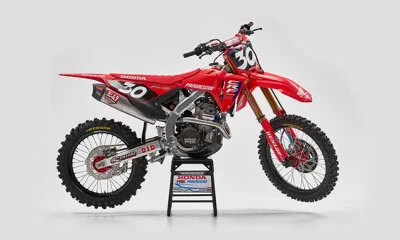
 Motorsports2 weeks ago
Motorsports2 weeks agoJo Shimoda Undergoes Back Surgery
-
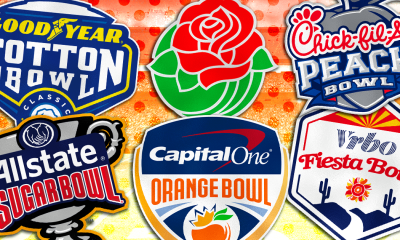
 NIL2 weeks ago
NIL2 weeks agoBowl Projections: ESPN predicts 12-team College Football Playoff bracket, full bowl slate after Week 14
-

 Rec Sports2 weeks ago
Rec Sports2 weeks agoHow this startup (and a KC sports icon) turned young players into card-carrying legends overnight
-

 Motorsports5 days ago
Motorsports5 days agoSoundGear Named Entitlement Sponsor of Spears CARS Tour Southwest Opener
-

 Rec Sports2 weeks ago
Rec Sports2 weeks agoRobert “Bobby” Lewis Hardin, 56
-
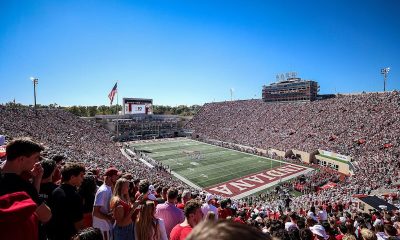
 NIL3 weeks ago
NIL3 weeks agoIndiana’s rapid ascent and its impact across college football
-

 Motorsports2 weeks ago
Motorsports2 weeks agoPohlman admits ‘there might be some spats’ as he pushes to get Kyle Busch winning again
-
Sports2 weeks ago
Wisconsin volleyball sweeps Minnesota with ease in ranked rivalry win


























